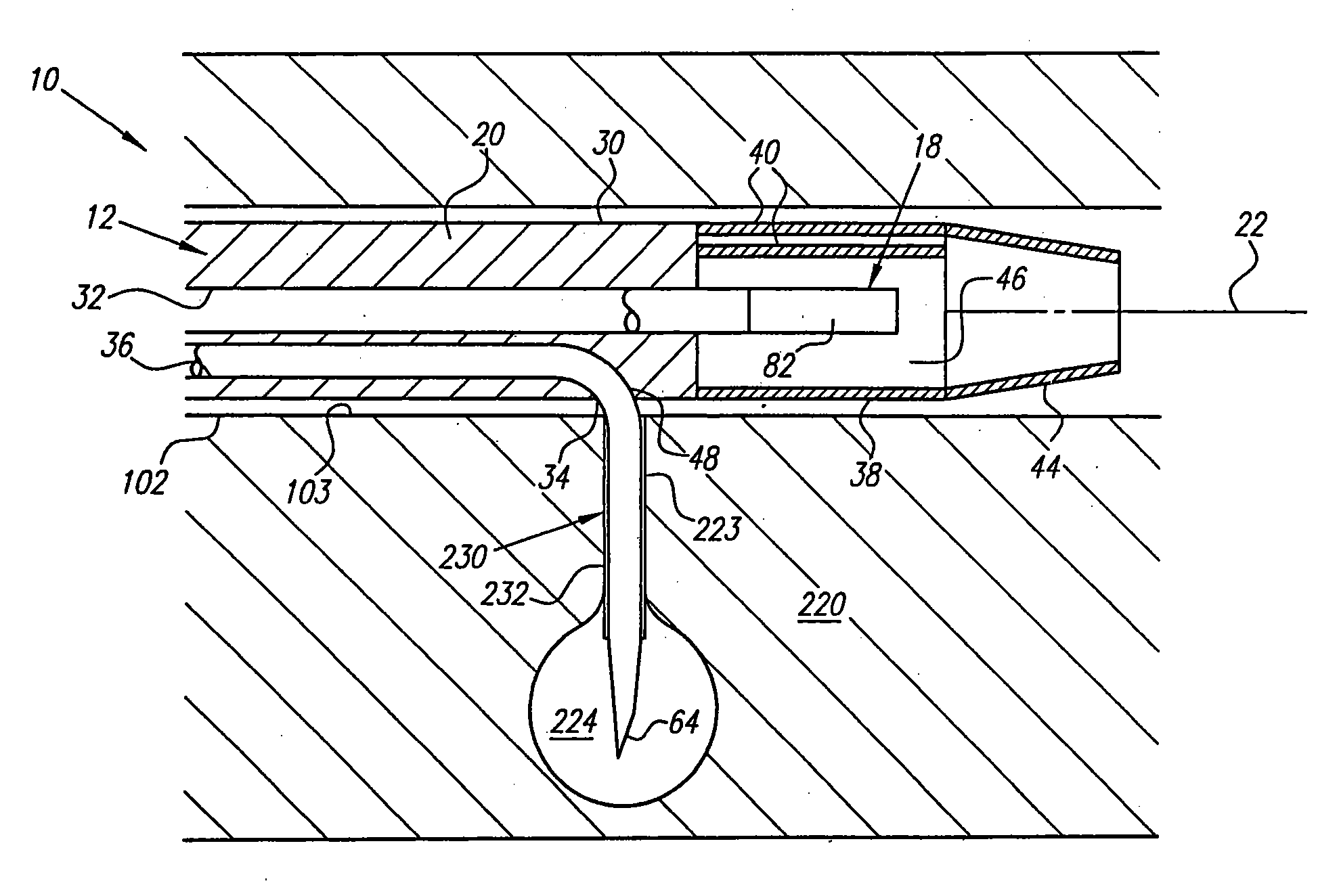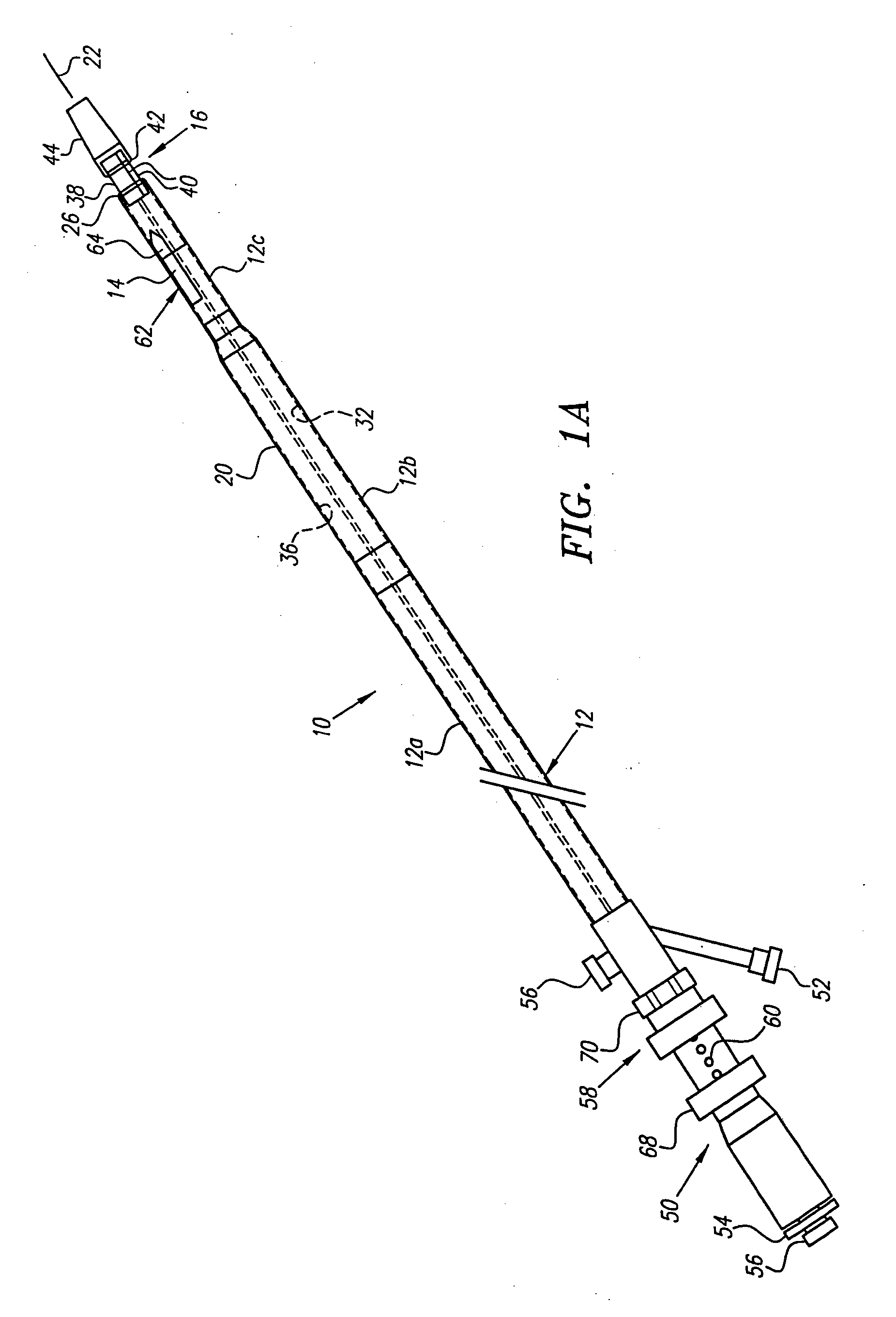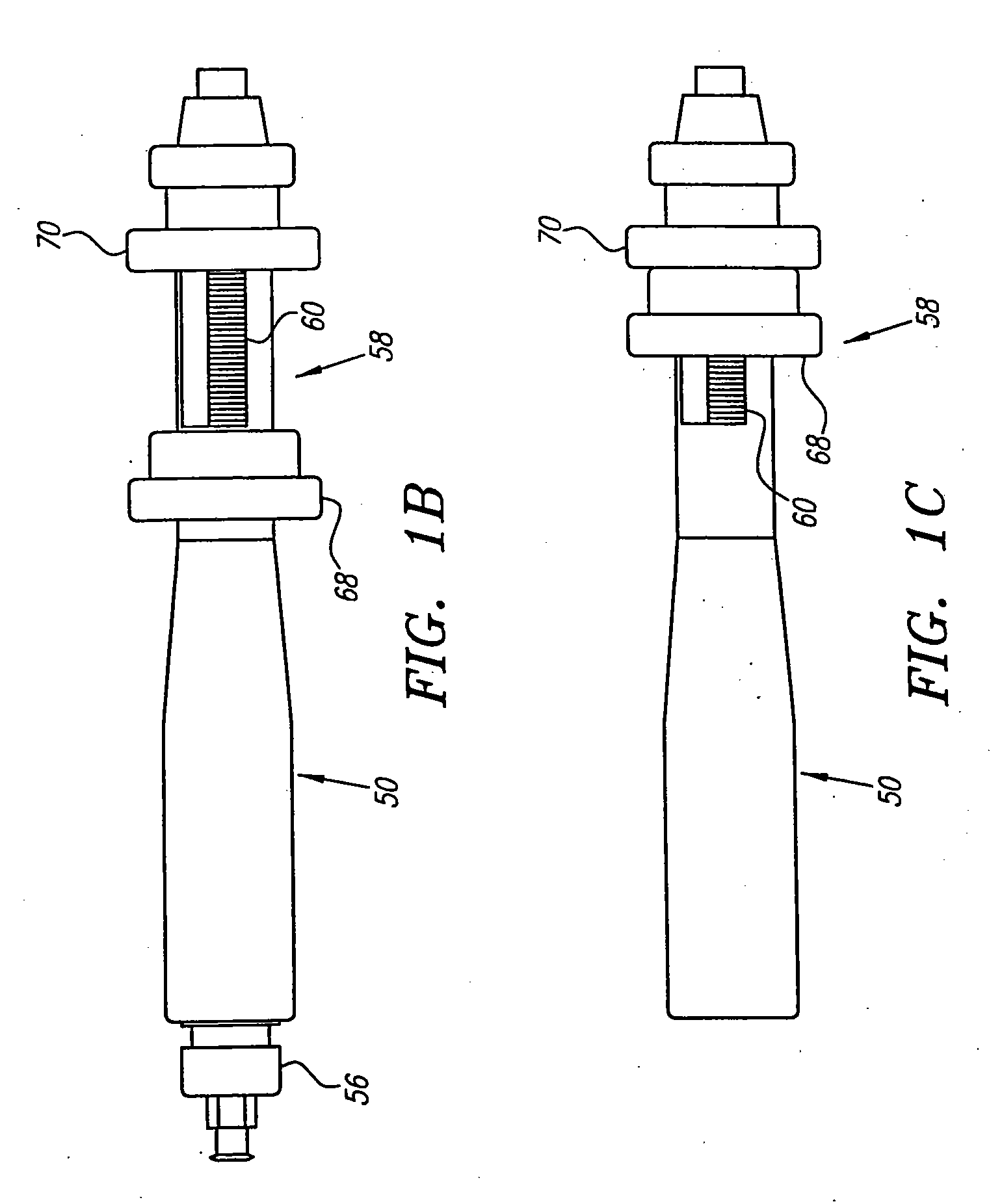Systems and Methods for Delivering Drugs to Selected Locations Within the Body
a system and method technology, applied in the field of systems and methods for delivering drugs into the body, can solve the problems of exacerbate the concern of undesired drug dissemination, dilution or “washing” of drugs during delivery, and dilution may substantially reduce the effectiveness of therapy
- Summary
- Abstract
- Description
- Claims
- Application Information
AI Technical Summary
Benefits of technology
Problems solved by technology
Method used
Image
Examples
Embodiment Construction
[0068] Turning now to the drawings, FIGS. 1A-1E and 2 show a preferred embodiment of a transvascular catheter system 10 in accordance with the present invention for delivering a drug to a selected remote tissue region within a body from a blood vessel near the tissue region. The system 10 generally includes a catheter 12, a puncturing element 14, an orientation element (e.g. a “cage” structure 16 described below), and an imaging element 18.
[0069] The catheter 12 may be an elongate member having substantially flexible and / or semi-rigid sections, and defining a circumference or periphery 20 and a longitudinal axis 22 between proximal and distal ends 24, 26. The catheter 12 includes a proximal portion 28 having a handle 50 and a distal portion 30 having a size and shape to facilitate insertion into a blood vessel.
[0070] An IVUS lumen 32 extends through the catheter 12 from an IVUS entry port 52 in the handle 50 to a tip member 44 on the distal portion 30 for receiving the imaging ele...
PUM
 Login to View More
Login to View More Abstract
Description
Claims
Application Information
 Login to View More
Login to View More - R&D
- Intellectual Property
- Life Sciences
- Materials
- Tech Scout
- Unparalleled Data Quality
- Higher Quality Content
- 60% Fewer Hallucinations
Browse by: Latest US Patents, China's latest patents, Technical Efficacy Thesaurus, Application Domain, Technology Topic, Popular Technical Reports.
© 2025 PatSnap. All rights reserved.Legal|Privacy policy|Modern Slavery Act Transparency Statement|Sitemap|About US| Contact US: help@patsnap.com



